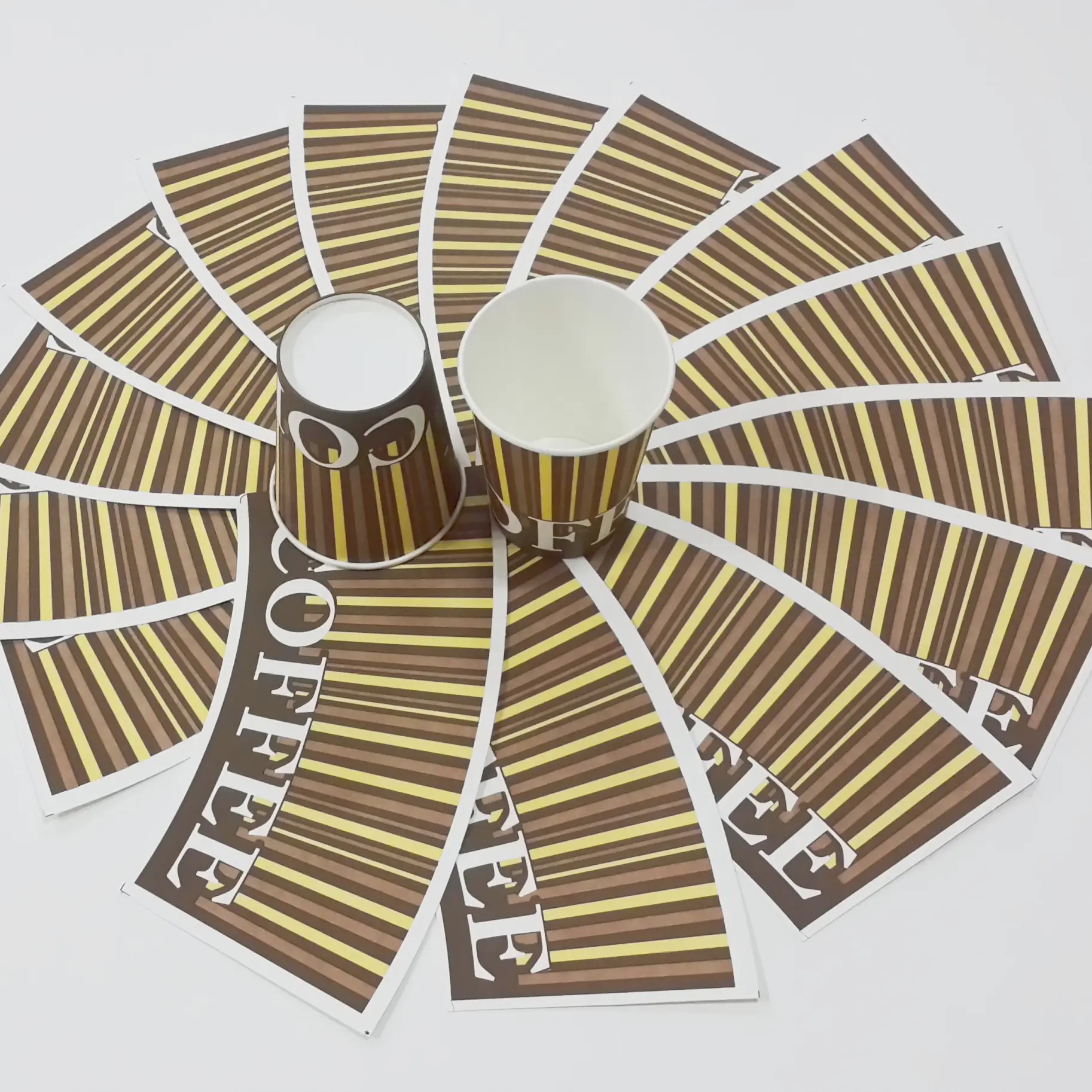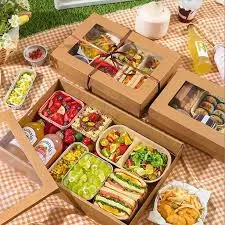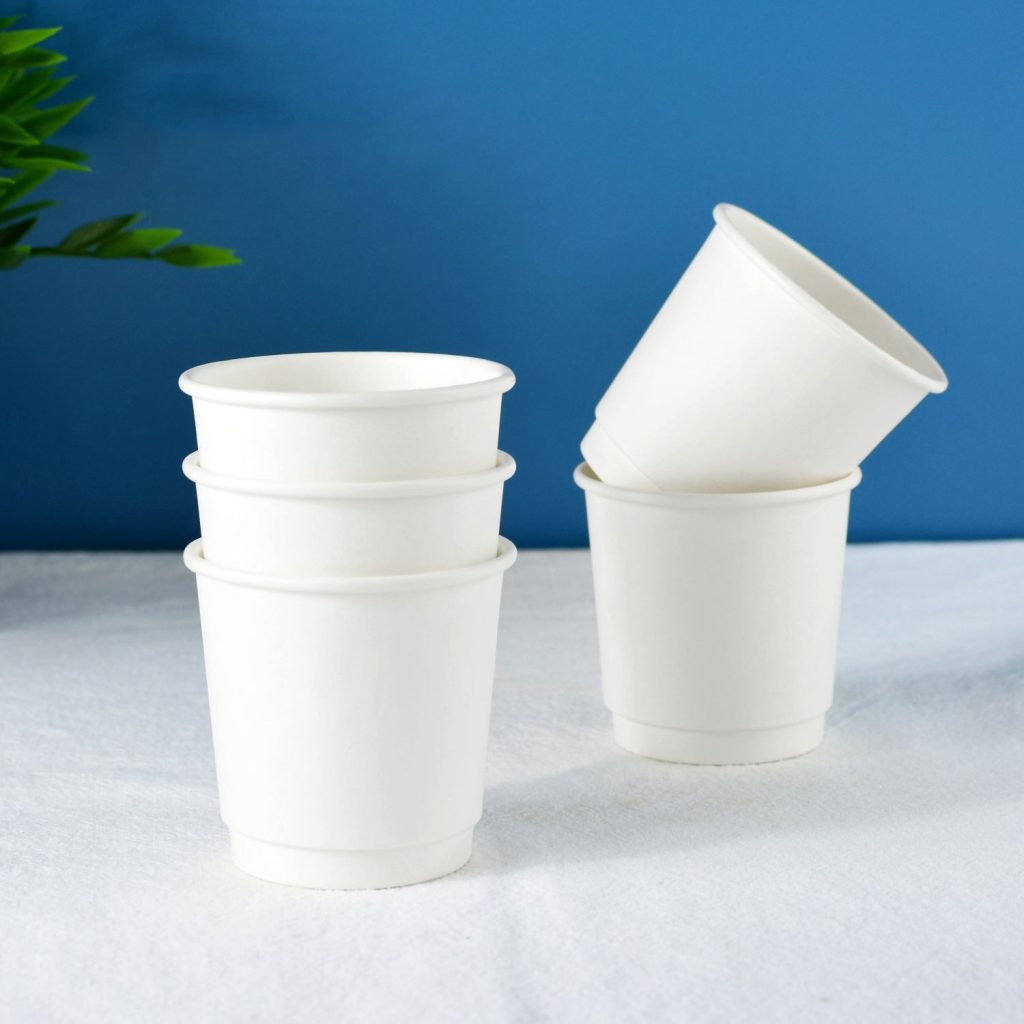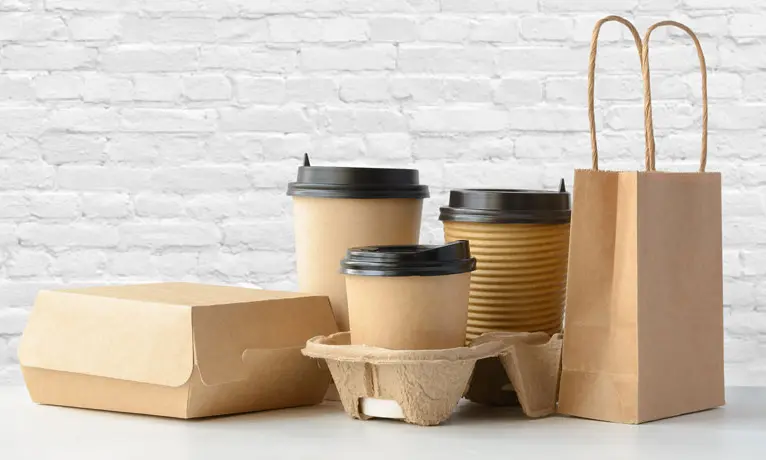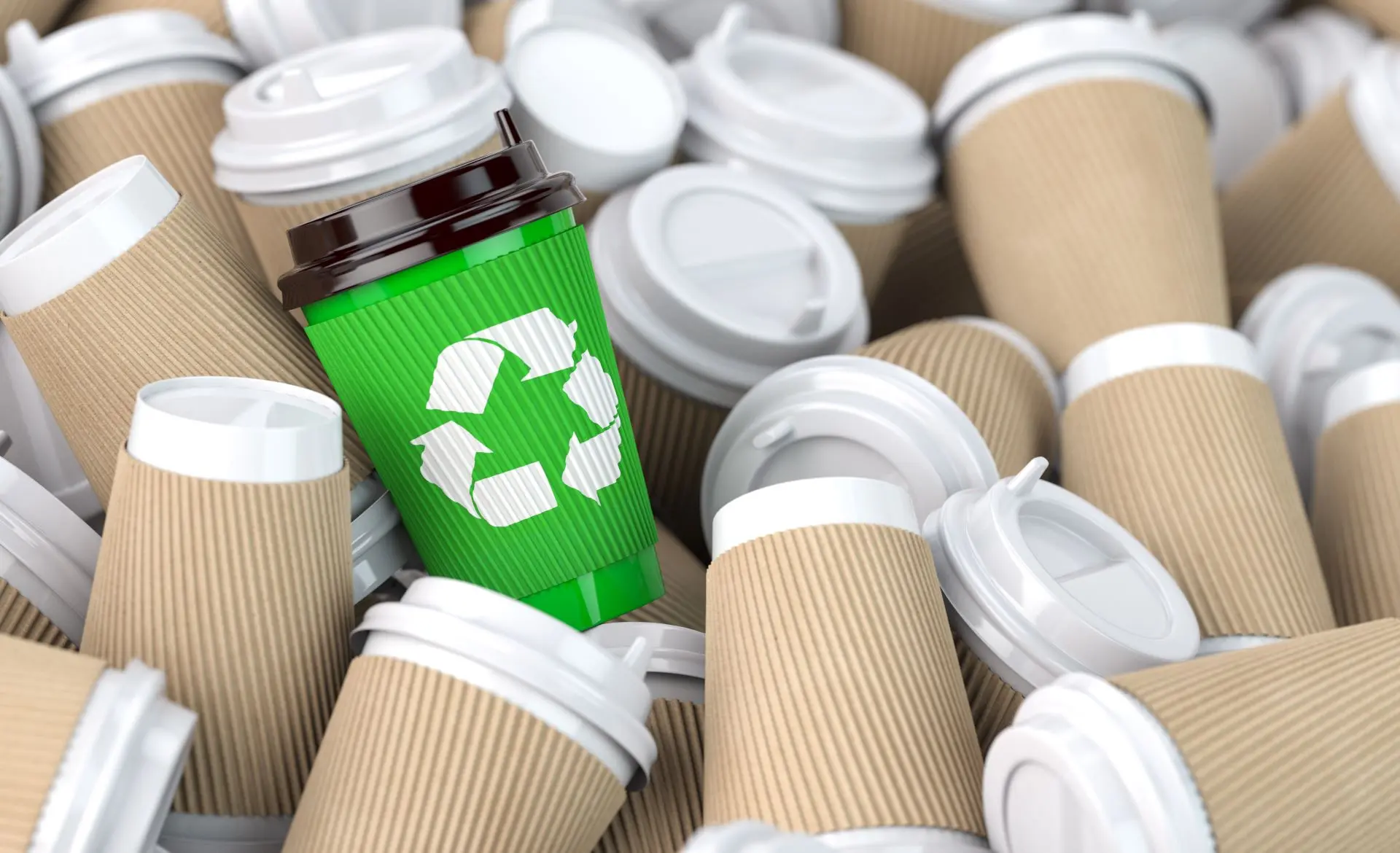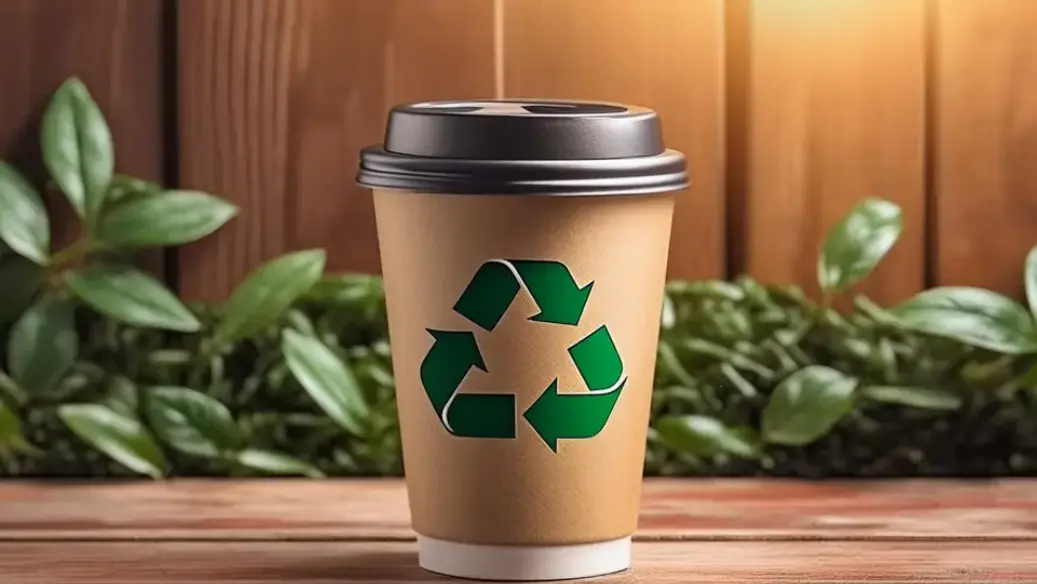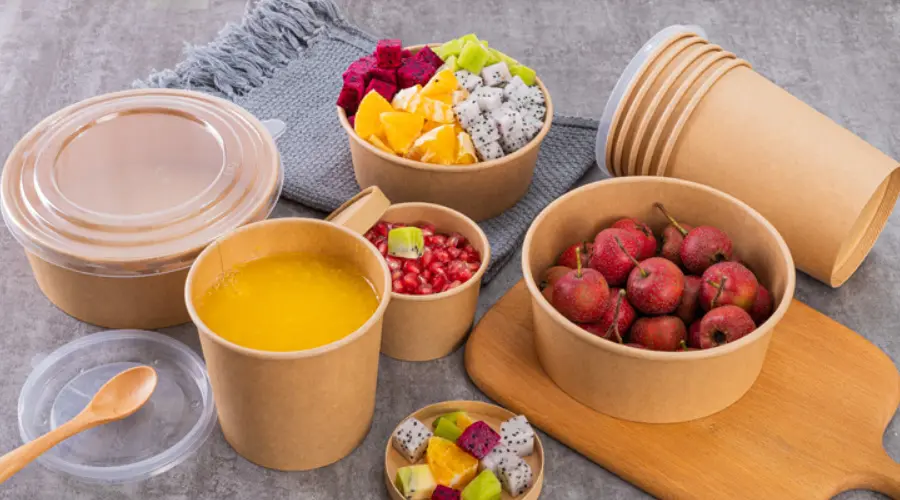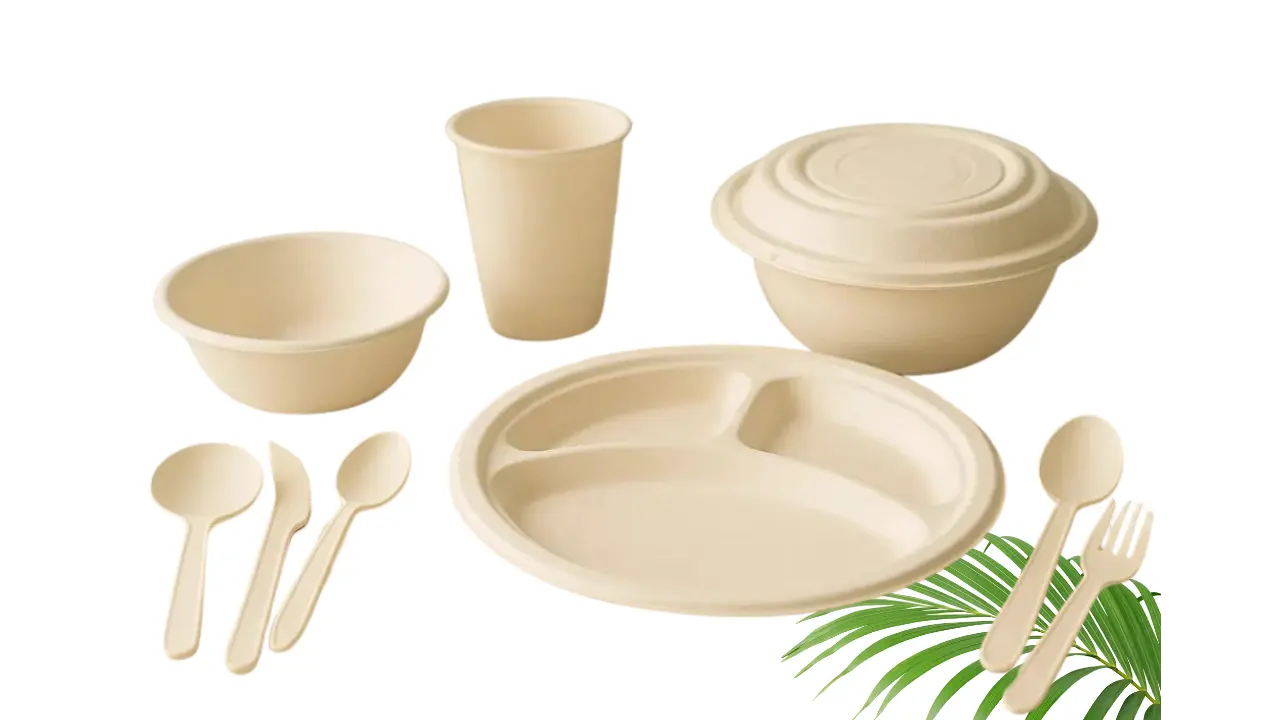How to choose the right food packaging paper box?
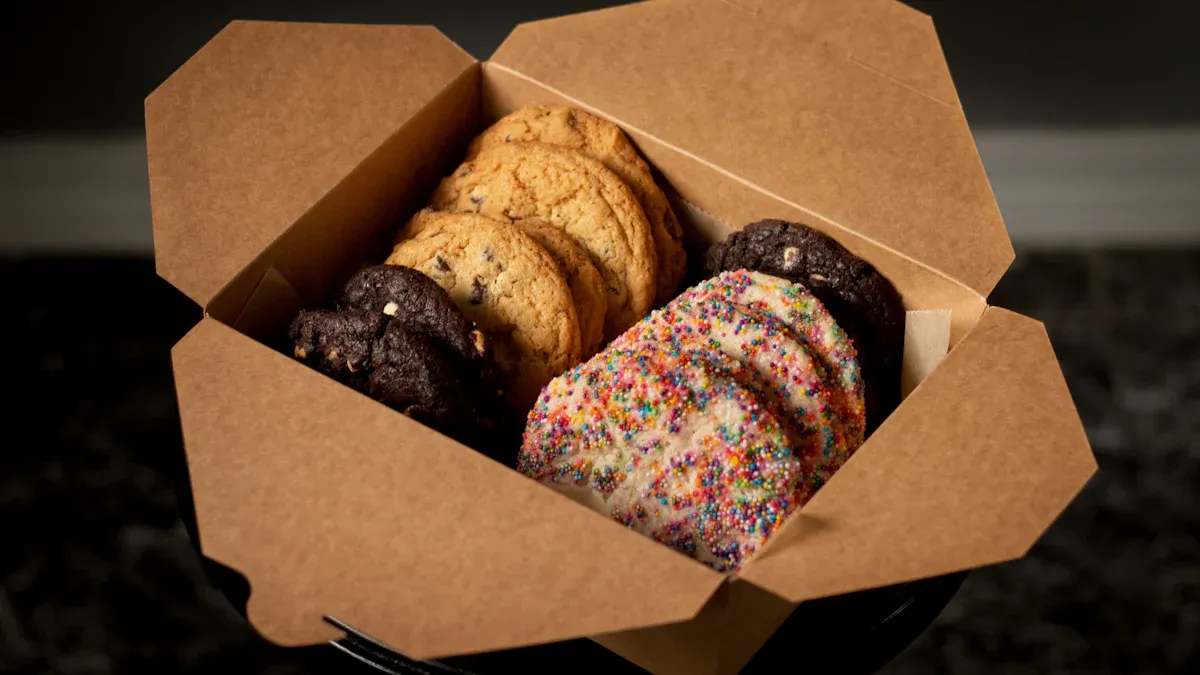 Selecting the right paper box for food packing significantly influences food quality and presentation. Recent studies highlight that different materials affect migration levels of harmful substances, impacting safety. Consumers increasingly prefer paper boxes due to their recyclability and environmental benefits. Thoughtful choices enhance culinary creations and align with sustainable practices.
Selecting the right paper box for food packing significantly influences food quality and presentation. Recent studies highlight that different materials affect migration levels of harmful substances, impacting safety. Consumers increasingly prefer paper boxes due to their recyclability and environmental benefits. Thoughtful choices enhance culinary creations and align with sustainable practices.
Key Takeaways
- Choose the right paper material to preserve food quality and safety. Kraft paper is strong and moisture-resistant, making it ideal for various food types.
- Consider the environmental impact of packaging. Paper options generally have a lower carbon footprint than plastic, promoting sustainability.
- Test packaging for food safety before use. Conduct compression, drop, and chemical tests to ensure compliance with safety standards.
Types of Paper Packaging Materials
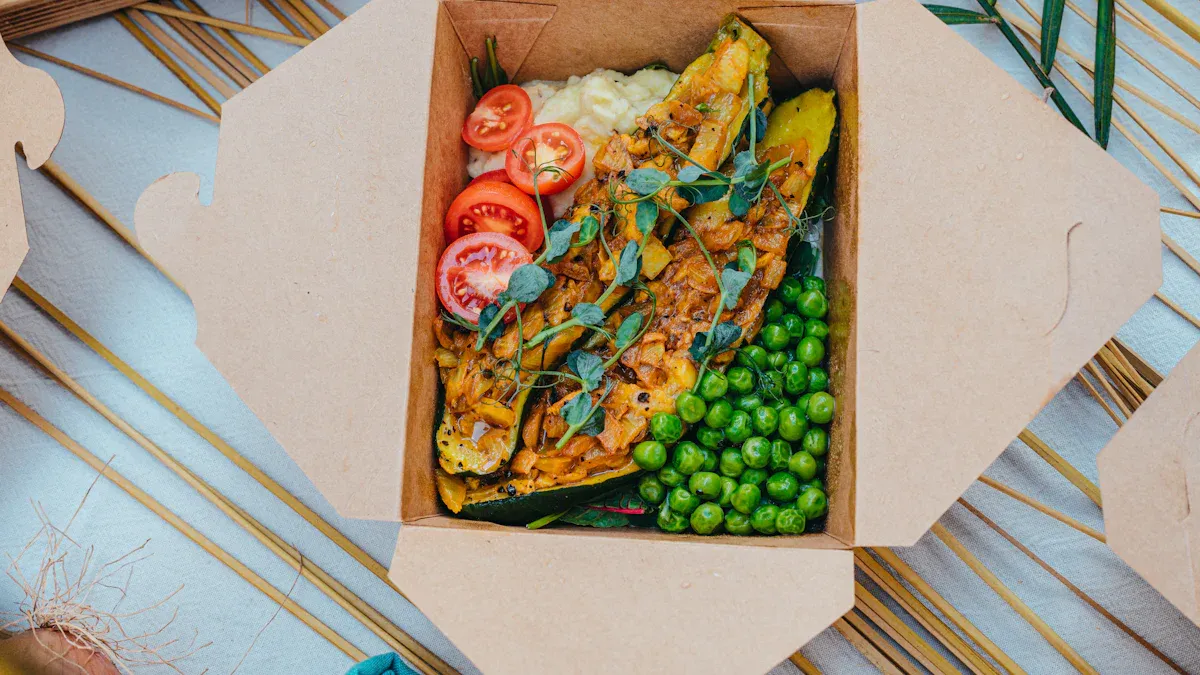
Kraft Paper
Kraft paper stands out for its strength and durability, making it a popular choice in Food Packaging. This material is known for its moisture resistance, which is essential for preserving the quality of various food items. Common applications include packaging for dry foods, cereals, snacks, and even wrapping for meat and poultry.
Key Properties of Kraft Paper:
- Strength: High tensile strength allows it to hold heavier items without tearing.
- Moisture Resistance: Treated to resist moisture, ensuring food stays fresh.
- Eco-friendliness: Biodegradable and recyclable, aligning with sustainable practices.
Kraft paper is particularly effective for bakery foods, snack foods, fast foods, and butter. Its versatility makes it suitable for a wide range of culinary creations.
| Property | Description |
|---|---|
| Strength | Known for high strength, suitable for heavy-duty packaging. |
| Durability | Ensures resilience during transport and storage. |
| Moisture Resistance | Can be treated to offer moisture barriers, essential for food packaging. |
| Eco-friendliness | Biodegradable, recyclable, and compostable, making it an environmentally responsible choice. |
Greaseproof Paper
Greaseproof paper is specifically designed to resist oil and grease penetration. This characteristic makes it ideal for fast-food packaging and other applications where food items may release oils. The manufacturing process involves treating the paper to enhance its grease resistance, ensuring that it maintains its integrity even when in contact with greasy foods.
Manufacturing Process of Greaseproof Paper:
- Raw Material Selection: Softwood or recycled paper is chosen for strong fibers.
- Pulping: Machines break up fibers with chemicals or force.
- Greaseproof Treatment: Chemical sizing adds greaseproof properties.
Greaseproof paper is widely used in the food service industry for items such as sandwiches, fried foods, and baked goods. Its non-stick surface allows for easy handling and serving, making it a favorite among chefs and food vendors.
| Type of Paper | Properties and Uses |
|---|---|
| Greaseproof Paper | Non-stick, eco-friendly, versatile; ideal for baking and wrapping. |
| Grease Resistant Paper | Coated for grease resistance; reliable for greasy foods. |
Recycled Paper
Recycled paper offers an eco-friendly alternative for food packaging. It is made from post-consumer waste, reducing the need for virgin materials. However, safety standards for recycled Paper In Food applications vary by region. For instance, in Germany, regulations specify migration limits for various substances in recycled fibers.
Safety Standards for Recycled Paper:
- EU: No harmonized legislation; compliance with individual Member State laws is required.
- Germany: BfR Recommendation 36 addresses recycled fibers; specifies migration limits.
- Italy: Allowed only for dry, nonfatty foods.
While recycled paper is a sustainable option, it is crucial to ensure that it meets safety standards for food contact. This consideration helps maintain food quality and safety while supporting environmental sustainability.
Key Factors to Consider
Food Type and Packaging Needs
When selecting packaging for food, it is crucial to consider how the material will preserve the flavor, shape, and texture of the product while maximizing shelf life and minimizing food waste. Each food type has specific requirements that must be met to ensure quality and safety. For instance, temperature-sensitive products like ice cream require materials that can withstand cold. Gourmet meals benefit from microwaveable packaging for convenience. Fresh produce needs materials that allow for proper ventilation, while processed foods may use aseptic cartons or metal cans.
| Food Type | Recommended Packaging Material |
|---|---|
| Dry goods | Paperboard or kraft with light PE coating |
| Acidic, oily, or heat-processed foods | Glass, lined metal, or high-barrier plastics |
Moisture and temperature also significantly affect the suitability of Paper Packaging for different foods. Variations in humidity and temperature can lead to product degradation. For example, increased humidity can enhance flexibility, which is advantageous for packaging irregular food shapes. However, this flexibility may come at the cost of reduced tensile strength, potentially compromising the packaging's ability to protect food products.
Environmental Impact
The environmental impact of packaging materials is a growing concern for consumers and businesses alike. Paper packaging options generally have a carbon footprint that is approximately 50% lower than that of plastic alternatives per tonne of product. For instance, Hexcel Wrap, a type of paper packaging, boasts a carbon footprint that is 65% lower than its plastic counterpart.
Biodegradable packaging, such as paper and cardboard, decomposes naturally in landfills or compost heaps. Different types of paper packaging materials, like acid-free tissue paper and Kraft paper, exhibit strong recyclability and biodegradability. Acid-free tissue paper is entirely recyclable and guarantees healthier biodegradability due to its reduced chemical content. Kraft paper, made from virgin wood pulp, breaks down into cellulose fibers within weeks, making it a sustainable choice for various packaging options.
- Paper and cardboard are among the most widely recycled materials due to their ease of processing.
- Recycling these materials involves breaking them down into fibers for remaking into new products.
- Fully recyclable packaging includes all components, such as labels and adhesives.
Cost and Budget Constraints
Cost considerations play a significant role in the choice of paper packaging, especially for small food businesses. Bare paper bags are more affordable than branded options, making them a practical choice for businesses with limited budgets. Small businesses often face pressure to adopt eco-friendly packaging while managing tight budgets. Creative sourcing can lead to sustainable packaging solutions that are financially viable.
- Businesses can explore bulk purchasing options to reduce costs.
- Investing in quality packaging can enhance brand perception and customer satisfaction.
- Balancing cost with sustainability is essential for long-term success.
Choosing the right paper box for food packing involves careful consideration of these factors. By aligning packaging choices with food type, environmental impact, and budget constraints, businesses can enhance their culinary creations while promoting sustainability.
Practical Tips for Choosing a Paper Box for Food Packing
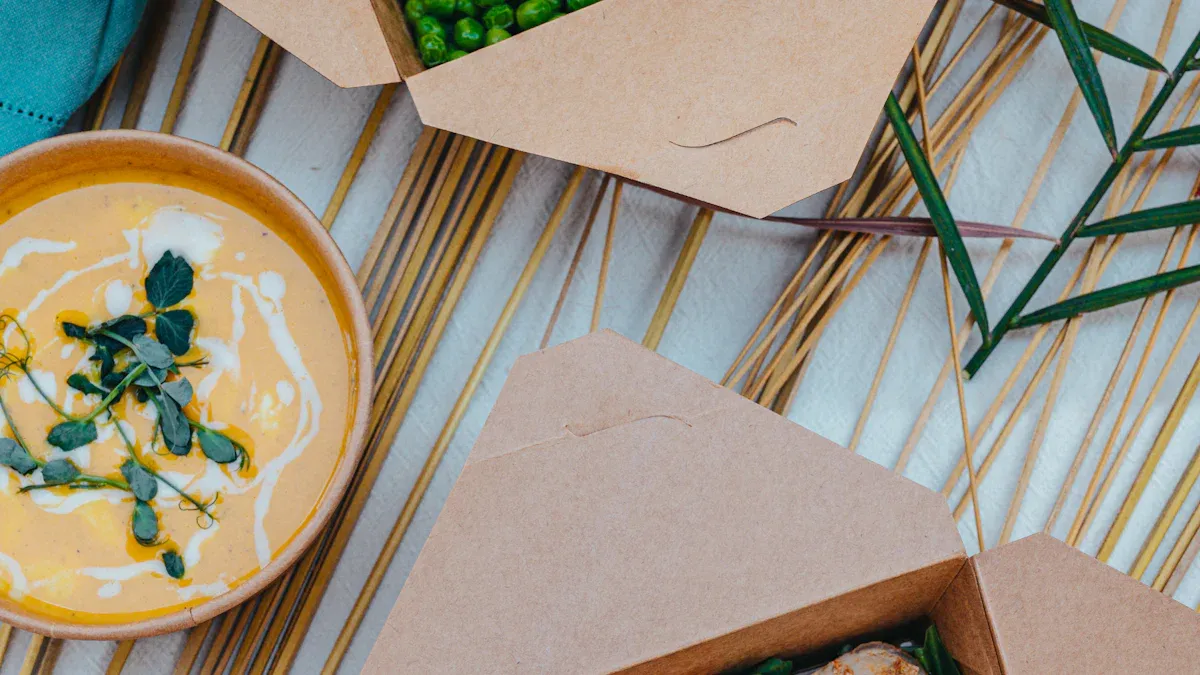
Sourcing Quality Materials
When sourcing materials for a paper box for food packing, businesses should prioritize several key factors. First, they must ensure compliance with packaging regulations. Proper labeling and allergen warnings are essential to avoid legal issues. Next, sustainability plays a crucial role. Companies should implement eco-friendly practices, such as using compostable materials. Additionally, design elements like matte finishes and embossed logos can convey quality and attract consumers.
Testing for Food Safety
Testing for food safety is vital before using any paper packaging. Businesses should conduct several assessments to ensure the packaging meets safety standards. Key tests include:
- Compression tests: Evaluate the packaging's durability under pressure.
- Drop tests: Assess how well the packaging withstands impacts during transport.
- Environmental conditioning: Test the packaging's performance in varying temperatures and humidity levels.
- Chemical tests: Conduct overall migration testing to check for harmful substances.
These tests help identify potential risks, such as the migration of harmful chemicals from the packaging into food.
Evaluating Supplier Options
Choosing the right supplier is crucial for maintaining quality and reliability. Businesses should evaluate suppliers based on several criteria:
| Criteria Type | Description |
|---|---|
| Quality Management Systems | Ensure suppliers meet quality certifications. |
| Economic Factors | Consider price, delivery, and service reliability. |
| Sustainability | Assess the use of green or recyclable packaging. |
| Communication | Maintain honest and frequent communication with suppliers. |
Reliable suppliers ensure timely delivery, which is essential for smooth operations. Delays can disrupt production and increase costs, especially in Just-in-Time (JIT) systems.
Selecting the right paper packaging for food products is essential. It enhances food quality and aligns with consumer preferences for sustainability. Businesses should consider the following benefits:
- Eco-friendly packaging fosters brand loyalty.
- Compliance with regulations reduces legal risks.
- Sustainable practices enhance customer satisfaction.
Thoughtful choices in packaging not only elevate culinary creations but also contribute to a healthier environment.
FAQ
What is the best paper packaging for hot foods?
Kraft paper works well for hot foods due to its moisture resistance and durability, ensuring food quality during transport.
How can I ensure my paper packaging is food-safe?
Conduct tests for chemical migration and ensure compliance with local food safety regulations before using any paper packaging.
Is recycled paper suitable for food packaging?
Recycled paper can be suitable, but verify that it meets safety standards for food contact to maintain quality and safety.

